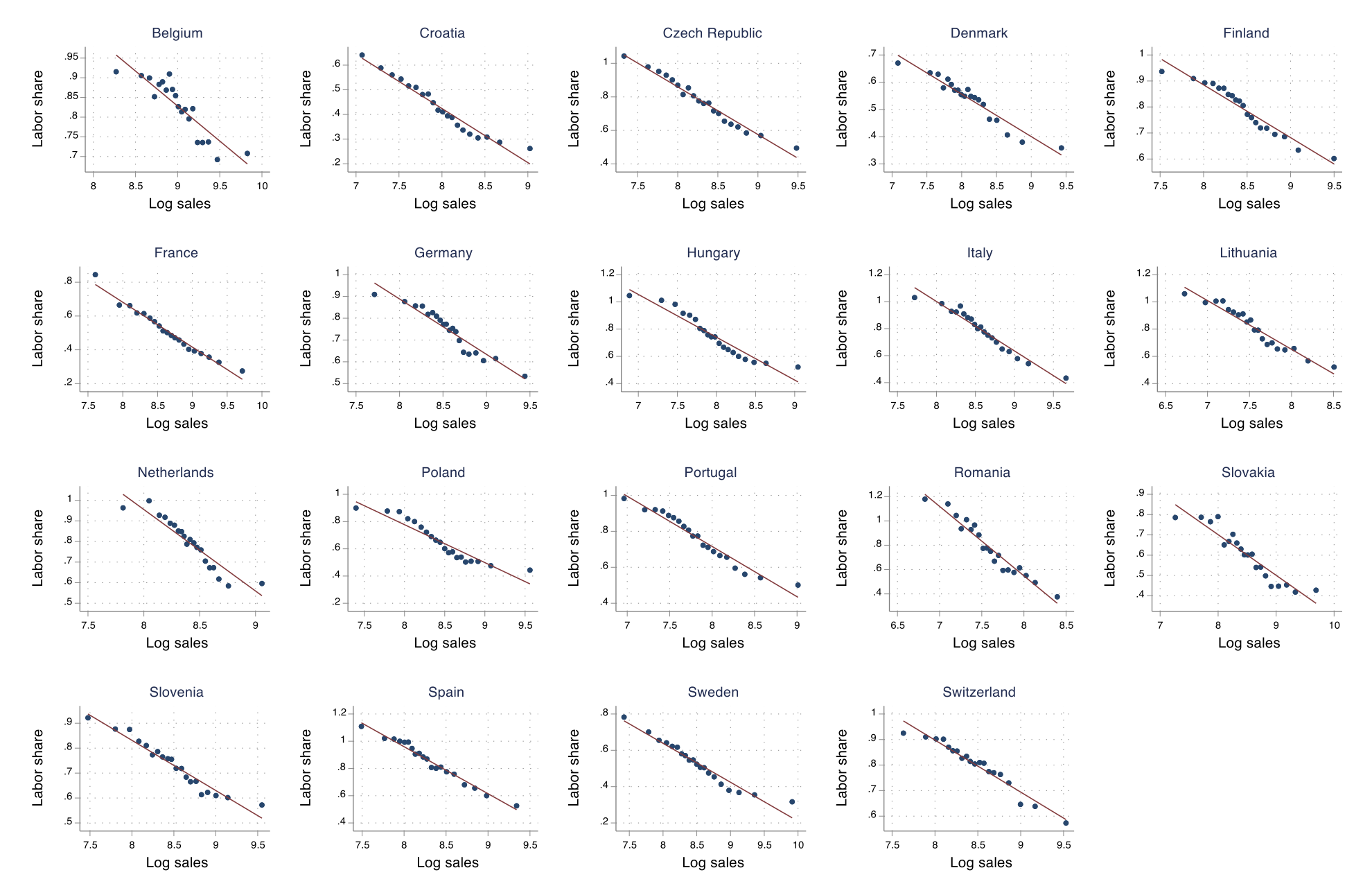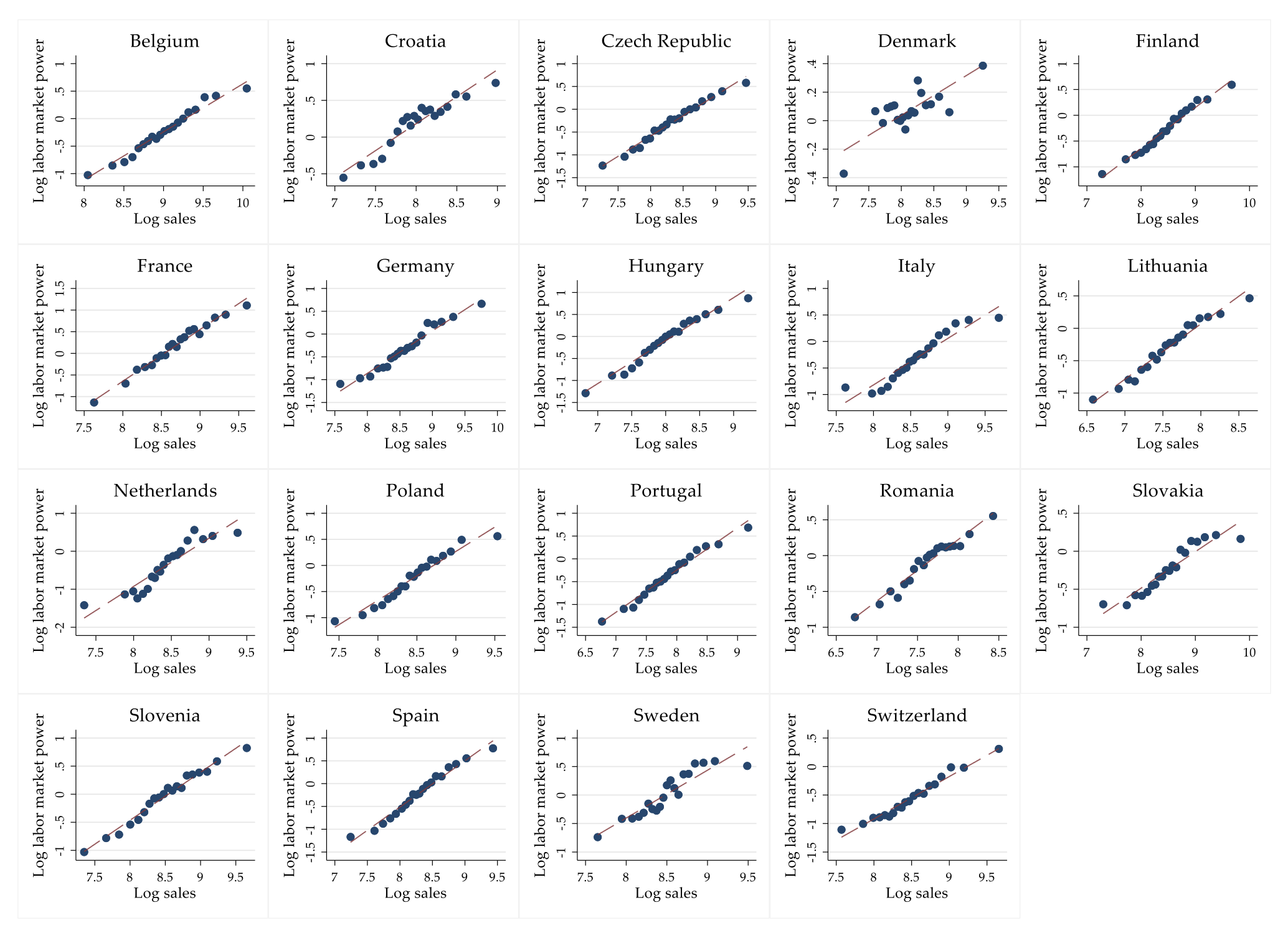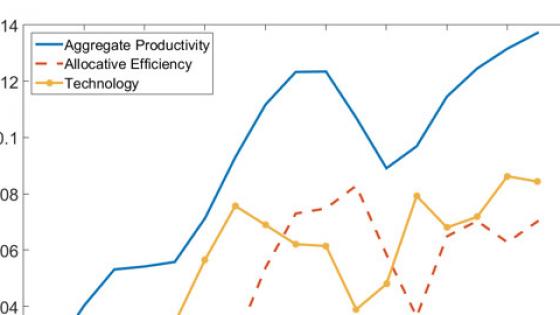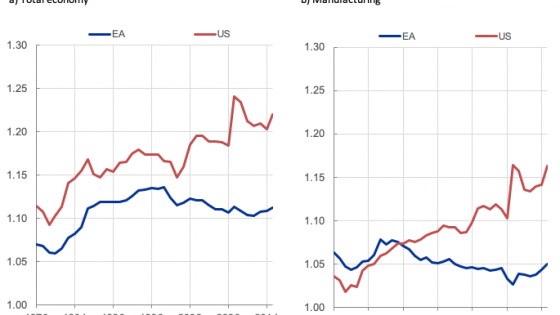When firms get bigger, the fear is that they may accumulate too much market power, which in turn may hurt consumers and workers. Firms may become dominant in specific market segments and could then extract rents from their position. In a wide class of models, this market power is reflected in a markup, i.e. a ratio of price to marginal cost which lies above unity. A growing literature, however, argues that firms might have additional means to exploit their dominant market position, in addition to raising output prices. For example, firms might also generate additional rents by lowering input prices below competitive levels. In the specific case of labour markets, this generates the ‘markdown of wages’, i.e. wages paid at levels below the marginal revenue product of labour. While competition authorities typically focus on the output market effects of dominant firm positions (i.e. output prices and markups), competition law gives much less attention to the role of market power in input (in our case labour) markets when assessing anticompetitive threats.
Measurement
Our standard indicators of markups and markdowns are derived from firm’s optimality conditions, following Hall (1986): under perfect competition, the expenditure share of each input equals its output elasticity, while market power lowers input expenditure and increases firm’s profitability. Thus, assuming perfect competition in the market of intermediate inputs, we measure markups as the ratio of materials’ output elasticity to their expenditure share.
Conversely, as labour markets are often not perfectly competitive, the ratio of labour’s output elasticity to its expenditure share would capture not only product markups, but also wage markdowns. However, since markups are already computed using intermediate inputs, the two indicators can be isolated and distinguished appropriately (Yeh et al. 2022).
To obtain levels of markups and markdowns, this approach requires us to estimate output elasticities. Yet, assuming a Cobb-Douglas production function with constant output elasticities across firms belonging to the same industry, markups and markdowns can be compared within industry by only looking at their expenditure shares. Thus, cross-sectional comparisons are robust to several issues related to production function estimation, including the so called ‘price bias’ (Bond et al. 2021).
Markup, markdown, and firm size
Against this background, it is important to ascertain the relative importance of the two sources of firms’ market power above identified (markup and markdown); and how they interact, particularly across different firm size classes. Consistent with previous evidence, we find that larger firms have lower labour shares compared to smaller firms in the same industries (Figure 1), suggesting that they hold a higher degree of market power. This implies that a reallocation of market shares from small to large firms, possibly induced by rising competition (Bighelli et al. 2022), would decrease the aggregate labour share, as discussed by Autor et al. (2020).
Figure 1 Labour share and firm size (sales)
Note: Binned scatter plots of median labour shares against median sales (in logs) within two-digit industries, controlling for year and industry fixed effects.
Source: CompNet data 1999-2018.
However, in two recent papers (Mertens 2022, Mertens and Mottironi 2023), we use firm-level based info on 19 European countries and show that, contrary to common wisdom, large firms charge indeed lower markups than smaller firms (Figure 2).
Figure 2 Markup and firm size (sales)
Note: Binned scatter plots of median markups (in logs) against median sales (in logs) within two-digit industries, controlling for year and industry fixed effects.
Source: CompNet data 1999-2018.
On the other hand, they appear to possess particular high levels of labour market power (see Figure 3), suggesting that lower labour shares of larger firms depend substantially on imperfections in the labour markets, where they exert more monopsony power and/or face less worker power.
Figure 3 Markdown and firm size (sales)
Note: Binned scatter plots of median markdowns (in logs) against median sales (in logs) within two-digit industries, controlling for year and industry fixed effects.
Source: CompNet data 1999-2018.
Conclusions and policy implications
There are two key take-aways from our findings. First, when measuring firm market power, we need to carefully differentiate the sources of such power. Second, larger firms appear to deploy high levels of labour market power while their revealed product market power is comparably low with respect to smaller ones.
The policy implications of the results are critical for competition authorities. When distortions originate in the product market, policies should steer on safeguarding new entries and price setting; when instead, distortions originate in the labour market, policies should aim at reducing the monopsony power of firms rebalancing the relative bargaining power of firms with respect to the workers. The CompNet dataset allows us to disentangle the relative importance of the two components rather precisely across firm size and countries (and, not shown, in sectors). They should be more systematically used when devising policies.
References
Autor, D, D Dorn, L F Katz, C Patterson and J Van Reenen (2020), “The fall of the labour share and the rise of superstar firms”, The Quarterly Journal of Economics 135(2): 645-709.
Bighelli, T, F di Mauro, M J Melitz and M Mertens (2022), “European firm concentration and aggregate productivity”, Journal of the European Economic Association (forthcoming).
Bond, S, A Hashemi, G Kaplan and P Zoch (2021), “Some unpleasant markup arithmetic: Production function elasticities and their estimation from production data”, Journal of Monetary Economics 121: 1-14.
De Loecker, J, J Eeckhout and G Unger (2020). The rise of market power and the macroeconomic implications”, The Quarterly Journal of Economics 135(2): 561-644.
Hall, R E (1986), “Market structure and macroeconomic fluctuations”, Brookings Papers on Economic Activity 1986(2): 285-338.
Philippon, T (2019), The Great Reversal, Harvard University Press.
Mertens, M (2022), “Labour Market Power, Superstar Firms, and Between-Firm Wage (In) Equality”, Mimeo.
Mertens, M and B Mottironi (2023), “Do Larger Firms Have Higher Markups?”, IWH-CompNet Discussion Paper.
Yeh, C, C Macaluso and C Hershbein (2022), “Monopsony in the U.S. labour market”, American Economic Review 112(7): 2099-2138.









